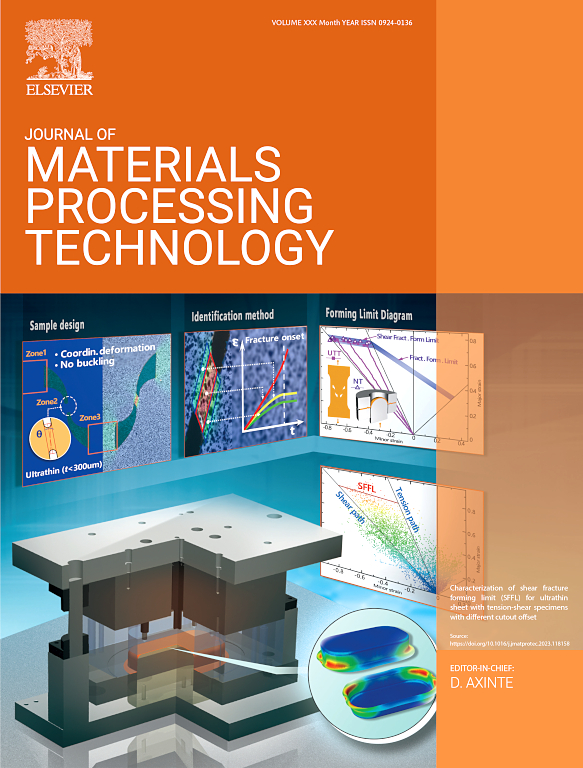Influence of SiC interlayer on mechanical and electrical joint characteristics of Cu-Al-Cu sandwich spot welds obtained using a new friction processing technique
IF 6.7
2区 材料科学
Q1 ENGINEERING, INDUSTRIAL
Journal of Materials Processing Technology
Pub Date : 2025-01-14
DOI:10.1016/j.jmatprotec.2025.118737
引用次数: 0
Abstract
Al busbars with Cu welded to Al on top and bottom, at lug connections, offer huge potential in carrying large currents at lower weight, cost and connection temperatures. Smaller weld areas increase joint electrical contact resistance and thinning of Cu, Al sheets during welding can cause premature failure in spot welds particularly in multilayer configuration. This work aims to overcome these drawbacks by obtaining large joint area Cu-Al-Cu sandwich spot welds using a new friction processing technique with and without SiC interlayer at joint interfaces. The technique eliminates direct stirring and reduces thinning of metal sheets to be joined. Localized melting and interdiffusion at Al-Cu interfaces at near eutectic temperatures is used to obtain the welds simultaneously at top and bottom joint interfaces. Thrust load and joint temperatures are used to investigate changes in weld microstructure and joint mechanical, electrical properties from presence of SiC particles at joint interfaces. Introduction of SiC particles, resulted in homogenous welds at top as well as bottom interfaces with smaller pores and thicker melt layer from enhanced interdiffusion. Improved wetting of eutectic melt with SiC particles and Al, Cu sheets, increased effective joining area, reduced electrical contact resistance, and increased joint strength. During fracture, cracks originated in brittle Al2Cu intermetallic phase next to Cu. However, the intermetallic phase appeared as scattered with interspersed Al in between. Consequently, cracks took a tortuous route around the SiC particles embedded in eutectic melt region increasing fracture toughness.
求助全文
约1分钟内获得全文
求助全文
来源期刊

Journal of Materials Processing Technology
工程技术-材料科学:综合
CiteScore
12.60
自引率
4.80%
发文量
403
审稿时长
29 days
期刊介绍:
The Journal of Materials Processing Technology covers the processing techniques used in manufacturing components from metals and other materials. The journal aims to publish full research papers of original, significant and rigorous work and so to contribute to increased production efficiency and improved component performance.
Areas of interest to the journal include:
• Casting, forming and machining
• Additive processing and joining technologies
• The evolution of material properties under the specific conditions met in manufacturing processes
• Surface engineering when it relates specifically to a manufacturing process
• Design and behavior of equipment and tools.
 求助内容:
求助内容: 应助结果提醒方式:
应助结果提醒方式:


